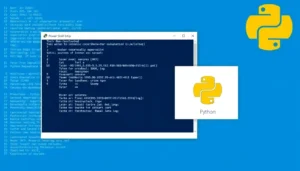Apple Event Stock Reaction: Slim iPhone Air and Price Hikes Stir Investor Sentiment
- THE MAG POST

- Sep 11
- 6 min read

Apple event stock reaction rests on how investors interpret both hardware pivots and pricing power. The latest Apple event delivered a mix of upgrades and policy shifts, provoking a tempered re-evaluation of the company's growth trajectory.
The presentation underscored a longer-term strategy that blends premium devices with services and health-centric features. While the stage was set for a strong narrative, markets emphasized sustainability and execution, not just novelty. This introduction frames the coming analysis: a nuanced read on how upgrades, pricing, and ecosystem strategy interact to shape Apple’s trajectory in a competitive tech landscape.
Apple Event Signals a Complex Path for Valuation and Strategy
Investors faced a carefully choreographed rollout that combined ultra-thin hardware with strategic pricing, setting the stage for a nuanced Apple event stock reaction. The event delivered a spectrum of upgrades while markets remained restrained, signaling that the catalyst may lie more in services and ecosystem lock-ins than in a single blockbuster device. Throughout the presentation, Apple sought to balance spectacle with sustainability, underscoring a longer arc where hardware refresh cadence, software services, and health-oriented features converge to support recurring revenue growth. The immediate market response suggested that the most credible signal was not a sensational launch but a calibrated demonstration of pricing power, product differentiation, and the scalability of its services ecosystem.
Market reception to the Air and iPhone 17 lineup
The iPhone 17 family, including the ultra-slim iPhone Air at a mere 5.6 millimeters, aimed to redefine portability without compromising performance. Apple described the Air as a paradox you have to hold to believe, pairing tougher, crack- and scratch-resistant glass with processor speeds that rival premium laptops in certain tasks. Such claims, coupled with AI-enabled features, position the device as a niche centerpiece within a broader strategy to diversify form factors and use cases. Pricing, anchored at roughly the mid-market threshold, moves into align with the premium tier, signaling a deliberate calibration rather than a price-cut gamble. Yet the stock reaction remained measured, reflecting a broader investor appetite for returns that extend beyond device upgrades and into services and health-focused platforms. The broader iPhone lineup, including Pro variants, also carried a price narrative designed to reward advanced capabilities while signaling the company’s willingness to test pricing boundaries. Market chatter emphasized value capture via software and services, which historically cushions revenue volatility associated with device cycles. In this context, the Apple event stock reaction appeared less about a single headline device and more about how well Apple translates hardware momentum into durable, recurring revenue streams. Investors weighed whether new processors, AI features, and improved glass durability translate into customer retention and higher lifetime value, especially as attention shifts toward ecosystem lock-in and premium services.
Pricing dynamics and revenue strategy after the event
Pricing dynamics emerged as a central thread, with the Pro tier seeing a noticeable step up that, in rounded terms, hints at a roughly $100 uplift in entry-level pricing. This move aligns with a pattern of premiumization observed in several high-end devices across the industry, yet Apple’s cadence is distinctive because it couples price with enhanced performance, AI capabilities, and potential software advantages. The strategy seems to prioritize durability of margins and a reinforcement of premium branding, a play that aims to stretch consumer willingness to pay while reducing price elasticity fears. From an investor perspective, the challenge lies in translating these price signals into sustained revenue growth that outpaces hardware fatigue and competitive pressure.
Beyond device pricing, the argument for a robust revenue engine rests on the synergy between hardware, wearables, and services. Apple’s reiteration of a health-centric approach—where devices contribute to data-driven wellness insights and safer experiences—speaks to a longer-term growth thesis that transcends one-off product cycles. If services revenue accelerates, it could offset slower hardware upgrade cycles and support higher free cash flow margins. The nuanced Apple event stock reaction thus reflects not only immediate price implications but also the recognition that a multi-pronged strategy may better weather cyclical headwinds and evolving consumer preferences.
Wearables and Services Push, But Growth Remains Elusive
The wearable portfolio—headlined by refreshed Apple Watch models featuring 5G connectivity and health-detection capabilities—continues to anchor Apple’s premium services push. By weaving health analytics, safety features, and seamless integration with other devices, Apple seeks to deepen user engagement, increase subscription adoption, and broaden the addressable market for its health-tech ecosystem. The new watches embody a tactical shift toward wellness and safety, which could expand the company’s recurring revenue base if user adoption outpaces device fatigue. While the hardware refresh demonstrates continued innovation, the market is watching whether software monetization, cloud services, and platform-specific subscriptions can generate the necessary impulse to reignite growth in a horizontal market that already feels mature.
Health-focused wearables and premium services
The upgraded wearables lineup positions health monitoring—such as advanced heart-rate analytics and chronic-condition detection—as a core differentiator. By integrating more robust sensors and faster processing, Apple aims to deliver a more compelling value proposition for health-conscious consumers and enterprise customers alike. This alignment with wellness trends could foster higher engagement, which, in turn, supports longer-term monetization through services, training programs, and premium app ecosystems. The challenge remains ensuring data privacy, interoperability, and real-world clinical relevance, all of which influence long-run adoption and trust—crucial factors for the Apple event stock reaction to mature into sustained upside.
From a financial perspective, the wearable and health-sensing narrative is a strategic bet that premium devices will drive deeper software consumption and better retention. If the ecosystem effect proves durable, it could amplify the lifetime value of customers and provide ballast during periods of slower hardware upgrades. However, real-world outcomes depend on perceived value, ease of use, and the reliability of accompanying services and updates, all of which will shape the magnitude and durability of the Apple event stock reaction over subsequent quarters.
Market psychology and long-term catalysts
Investor sentiment continues to calibrate between the allure of groundbreaking devices and the reality of incremental improvements. The slim Air model and the expanded AI features are powerful proof points, but groups of investors remain attentive to how new price structures, service expansions, and health-oriented software translate into durable revenue streams. The narrative suggests that catalysts lie less in a single launch and more in the compound effects of product loyalty, software subscriptions, and the integration of health tech into everyday life. The Apple event stock reaction thus becomes a barometer for broader optimism about the platform’s growth trajectory in the face of competition and market headwinds.
Looking ahead, the potential for recurrent revenue growth hinges on execution across services, iCloud, health data partnerships, and enterprise adoption. If these elements converge with continued hardware prestige, Apple could sustain higher margins and more predictable cash generation. The market will test this hypothesis by watching for revenue mix shifts, subscriber growth, and the elasticity of premium pricing as the company navigates evolving consumer priorities and regulatory landscapes. The ongoing Apple event stock reaction will reflect how convincingly Apple translates product prestige into durable financial performance.
Key Takeaways
Apple’s latest event showcased a refined strategy that leans into premium hardware, enhanced wearables, and a stronger services thesis. While the initial Apple event stock reaction was cautious, the combination of a slender Air device, pricing discipline on Pro models, and a health-forward wearables push suggests a deliberate attempt to extend margins and stabilize growth. For investors, the key takeaway is that value now lies in the network effects of software, health analytics, and ecosystem integration as much as in device horsepower. The story ahead will hinge on how well these elements translate into repeat purchases, higher engagement, and durable recurring revenue over multiple quarters.
Aspect | Summary |
Event headline | Markets shrugged at the hype; the Apple event stock reaction leaned toward caution as hardware upgrades collided with pricing decisions. |
Key hardware updates | iPhone Air at 5.6mm, iPhone 17 lineup, and Pro/Max variants highlighted alongside resilience in glass and computing power. |
Pricing strategy | Pro tier entered a higher price band, roughly a $100 uplift, signaling premium positioning and potential margin support. |
Wearables and health tech | Watch Series 11, SE3, and Ultra 3 with 5G and health-sensing features deepen health-tech integration and services appeal. |
Market implications | Stock trajectory will hinge on services growth, subscriber momentum, and how hardware gains translate into recurring revenue. |






















































Comments